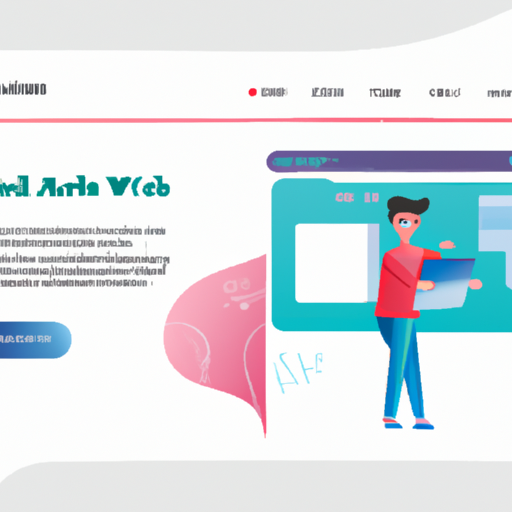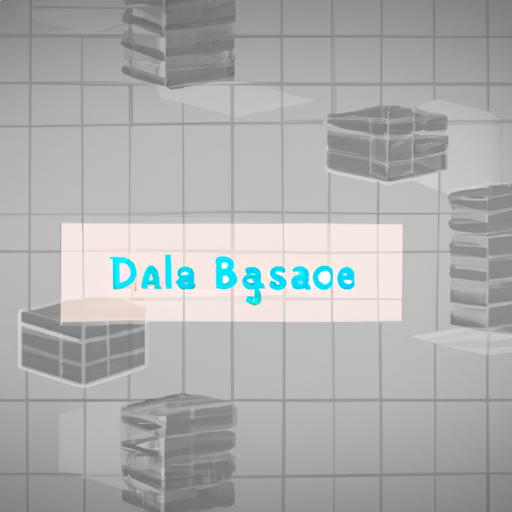-
Table of Contents
“Bringing your vision to life – Web Development from Front to Back.”
Introduction
Web development is the process of creating and maintaining websites and web applications. It involves both front-end and back-end development, which are two distinct but interrelated disciplines. Front-end development focuses on the user interface and user experience of a website, while back-end development focuses on the server-side functionality and data management. Together, these two disciplines are essential for creating a successful website or web application.
Exploring the Benefits of Responsive Web Design
Responsive web design (RWD) is an increasingly popular approach to web design that enables websites to be optimized for multiple devices and screen sizes. This approach ensures that websites are accessible and easy to use on any device, from desktop computers to mobile phones. By utilizing RWD, businesses can create a consistent user experience across all devices, allowing them to reach a wider audience and increase their customer base.
The primary benefit of RWD is that it allows websites to be viewed on any device, regardless of the size of the screen. This is especially important in today’s world, where people are increasingly using mobile devices to access the internet. By utilizing RWD, businesses can ensure that their website is accessible and easy to use on any device, allowing them to reach a wider audience.
Another benefit of RWD is that it allows websites to be optimized for different devices. This means that the website can be tailored to the specific device, ensuring that the user experience is optimized for that device. This can help to improve the user experience, as well as increase the chances of customers returning to the website.
Finally, RWD can help to improve the performance of a website. By optimizing the website for different devices, the website can be made to load faster, which can help to improve the user experience. This can also help to reduce the amount of time it takes for a website to load, which can help to improve the overall performance of the website.
In conclusion, responsive web design is an increasingly popular approach to web design that can provide numerous benefits to businesses. By utilizing RWD, businesses can ensure that their website is accessible and easy to use on any device, allowing them to reach a wider audience. Additionally, RWD can help to optimize the website for different devices, improving the user experience and increasing the chances of customers returning to the website. Finally, RWD can help to improve the performance of a website, reducing the amount of time it takes for a website to load and improving the overall performance of the website.
Understanding the Basics of Server-Side Rendering
Server-side rendering (SSR) is a method of rendering web pages on the server before they are sent to the user’s browser. It is a process that involves the server generating HTML for a requested page and sending it to the user’s browser. This is in contrast to client-side rendering, where the browser is responsible for generating the HTML.
The main advantage of server-side rendering is that it allows for faster page loading times. This is because the server is able to generate the HTML for the page before it is sent to the user’s browser. This means that the browser does not have to wait for the JavaScript to be downloaded and executed before it can render the page.
Another advantage of server-side rendering is that it allows for better SEO. This is because the HTML generated by the server is more easily indexed by search engines. This means that pages rendered with server-side rendering are more likely to appear higher in search engine results.
Finally, server-side rendering allows for better security. This is because the server is responsible for generating the HTML, which means that malicious code cannot be injected into the page. This makes it more difficult for attackers to gain access to sensitive information.
In conclusion, server-side rendering is a powerful tool for improving page loading times, SEO, and security. It is an important part of any web development project and should be considered when building a website.
The Pros and Cons of Using a CMS for Web Development
The use of a Content Management System (CMS) for web development has become increasingly popular in recent years. A CMS is a software application that allows users to create, edit, and manage digital content on a website. While there are many advantages to using a CMS, there are also some potential drawbacks. This article will explore the pros and cons of using a CMS for web development.
Pros
One of the main advantages of using a CMS for web development is that it simplifies the process of creating and managing content. A CMS provides a user-friendly interface that makes it easy to create and edit content, as well as manage the overall structure of the website. This makes it much easier for non-technical users to manage their website without having to learn complex coding languages.
Another benefit of using a CMS is that it allows for greater flexibility in terms of design and functionality. Many CMSs come with a wide range of themes and plugins that can be used to customize the look and feel of the website. This makes it easier to create a unique and engaging website that stands out from the competition.
Finally, using a CMS can help to improve the security of a website. Many CMSs come with built-in security features that can help to protect the website from malicious attacks.
Cons
One of the potential drawbacks of using a CMS is that it can be difficult to customize the website to meet specific needs. While many CMSs come with a wide range of themes and plugins, they may not be able to meet all of the user’s needs. This can be especially true for more complex websites that require custom coding.
Another potential issue is that using a CMS can be more expensive than creating a website from scratch. Many CMSs require a monthly subscription fee, which can add up over time. Additionally, some CMSs may require additional plugins or themes that can add to the cost.
Finally, using a CMS can limit the scalability of a website. While many CMSs are designed to handle large amounts of traffic, they may not be able to handle sudden spikes in traffic. This can be especially true for websites that rely on dynamic content.
In conclusion, using a CMS for web development can be a great way to simplify the process of creating and managing content. However, it is important to consider the potential drawbacks before making a decision.
How to Optimize Your Website for Performance
Optimizing your website for performance is essential for providing a positive user experience and ensuring that your website runs smoothly. Here are some tips to help you optimize your website for performance:
1. Minimize HTTP Requests: Every time a user visits your website, their browser sends an HTTP request to the server. The more requests that are sent, the longer it takes for the page to load. To reduce the number of requests, you can combine multiple files into one, such as combining multiple CSS files into one. You can also use CSS sprites to combine multiple images into one.
2. Enable Compression: Compression reduces the size of files that are sent from the server to the user’s browser. This reduces the amount of time it takes for the page to load. You can enable compression by using Gzip or Brotli.
3. Use a Content Delivery Network (CDN): A CDN is a network of servers located around the world that can deliver content to users faster. By using a CDN, you can ensure that users are served content from the closest server, which reduces the amount of time it takes for the page to load.
4. Optimize Images: Images can take up a lot of space and slow down your website. To optimize images, you should compress them and use the correct file format. You should also use the srcset attribute to serve different images to different devices.
5. Minify HTML, CSS, and JavaScript: Minifying HTML, CSS, and JavaScript files removes unnecessary characters, such as whitespace, comments, and formatting, which reduces the size of the files and improves performance.
By following these tips, you can optimize your website for performance and ensure that your website runs smoothly.
Conclusion
In conclusion, web development is an ever-evolving field that requires a combination of both front-end and back-end development skills. Front-end development focuses on the user experience and the visual aspects of a website, while back-end development focuses on the server-side programming and database management. Both are essential for creating a successful website. With the right combination of skills, web developers can create powerful and engaging websites that meet the needs of their clients.




